Honeydew honey should not be considered to be a type of honey made from melons. They are also called honeydew, but have nothing to do with the honey.
So, what is honeydew honey? A type of honey made from the “blood” of our trees. Their sap. You’ll see.
Honeys are classified in 2 major categories. The first category gathers all blossom honeys, which are made from nectar. The second category refers to honeys made from trees, and this doesn’t mean the flowers of those trees. Usually these trees don’t make flowers.
So, if the trees don’t have flowers, where do the bees find nectar for the honey? They don’t. Instead, they use another sweet liquid they found on the trees’ bark and leaves. It is called honeydew.
What is honeydew?
A liquid secreted by some tiny insects, which suck the tree’s sap. Well, in a few words, and as grouse as it may sound, this is exactly what happens: these insects eat the tree’s sap, and then poo this liquid that we can see on leaves or barks, called honeydew.
The name comes from “dew”, those tiny drops of water that form on cool surfaces at night. These drops of liquid were eventually called honeydew, probably because they are very sweet, or because bees also feed on it.
The tiny insects that do this are usually aphids, but there are also scale insects, some caterpillars and some moths. But aphids are the most frequent.
What are aphids?
Aphids are the plant lice, aka greenflies, blackflies, or whiteflies (not to be confused with “jumping plant lice” or true whiteflies), are small sap-sucking insects, of 1 to 10 millimeters. They live in a mutualistic relationship with ants, meaning the ants feed of the honeydew the aphids secrete, and to thank them, they help them live on the plant. Aphids are eaten by lady bugs, parasitic wasps, aphid midge larvae, crab spiders and others.

Science explains the process like this: Sucrose concentration is directly reduced by assimilating sucrose toward metabolism and by synthesizing oligosaccharides from several sucrose molecules, thus reducing the solute concentration and consequently the osmotic pressure. Oligasaccharides are then excreted through honeydew, explaining its high sugar concentrations, which can then be used by other animals such as ants. (source: wikipedia)
How is honey made?
Due to its high content of sugars, honey bees like this liquid and make honey out of it. The process is similar to the one they use when collecting nectar from flowers. They eat it, mix it with some enzymes from their body, and placed in their special honey stomach. Back at the hive, they regurgitate this honey-to-be liquid, and place it into cells, from there it will be taken care by other bees, who are in charge of continuing the process of making honey. (Read What are the jobs of a honey bee?)
Further reading:
• How is honey made?
On the market we find honeydew honey labelled as “forest” or “honeydew” or “fir”.
Usually, to label a honey as honeydew honey we use sensory judgement and electrical conductivity measurements. For honeydew honeys the electrical conductivity should be of minimum of 0.8 milli Siemens/cm (mS/cm) as it was adopted in the world standards.
Fir honeys have generally conductivity values greater than 1 mS/cm (19,20).
Where can bees find honeydew?
Most plants that are attacked by these flies are trees, the coniferous trees yielding worldwide the highest amounts of honeydew. However, other plants, e.g. cotton, lucerne and sunflower can also provide honeydew.
The most common honeydew honey come from fir, pine, oak, willow, white poplar, plum, beech, peach, metcalfa (in Italy) etc.
In Asia, their specific honey bee, Apis Cerana, are mostly found on this honeydew, and new research showed that their honeys seem to originate from honeydew.
The chestnut tree is an example of a kind of tree that can be considered sometimes as producing honeydew honey though most of the time its honey is considered blossom honey. In spring the tree offers large quantities of nectar from its flowers, but also honeydew, because the tree is attacked by lots of aphids leaving behind sweet honeydew that bees also collect. Because the honey will no longer be made in a proportion of 90% of chestnut flowers, the honey is sometimes considered not to be blossom honey, but honeydew honey.
The same can happen for black locust honey, lime honey, manuka honey, acacia honey, tualang honey.
Characteristics of honeydew honey
The honeydew honey contains specific elements, easily seen under a microscope, like: mold hyphae and spores, unicellular algae. It also contains pollen from nectarless plants.
The honeydew honey elements/pollen ratio was often found below the limit of 3 that, according to Louveaux et al. (1978), should be typical of this honey.
Colour intensity: dark to very dark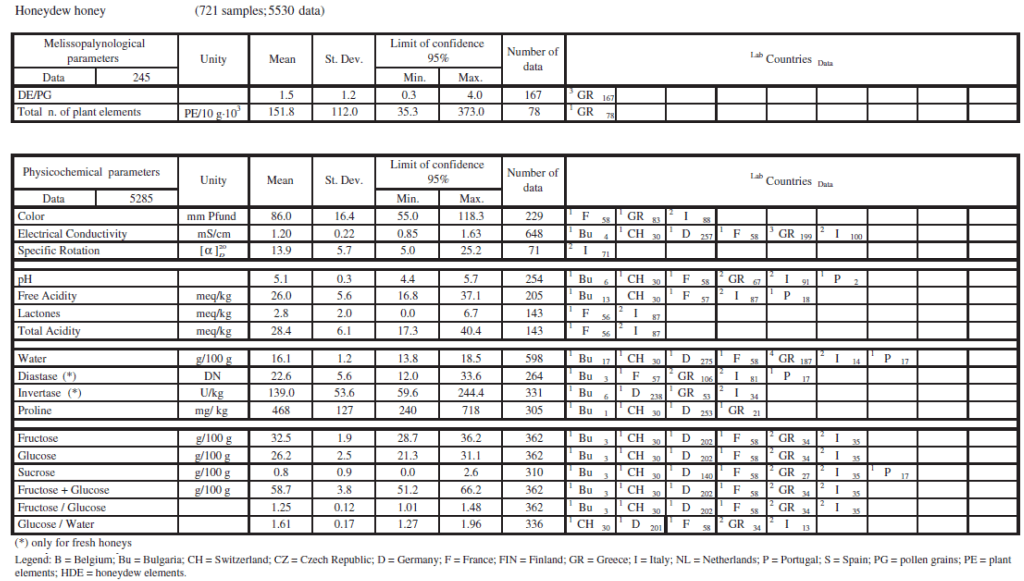
Colour tone: normal honey colour with green fluorescence
Intensity of odour: medium
Description: woody and warm
Sweetness: medium
Acidity: weak
Bitterness: absent
Intensity of aroma: medium
Description of aroma: woody and warm
Persistence/aftertaste: medium
Other mouth perceptions: sometimes astringent
Crystallisation rate: slow
Other: it is very commonly of a very thick consistency, due to a low water content.
Electrical conductivity: higher than 0.8 mS/cm,
Fructose+Glucose: minimum 45 g/100 g (according to the European Directive)
 GI: high, 89. (probably due to its high melezitose content)
GI: high, 89. (probably due to its high melezitose content)
pH: high, 5.2
Oligosaccharides: high level, 13.01 (compared to 3.6 in blossom honeys). Honeydew honey compared to blossom honey contains higher amounts of oligosaccharides, and also trisaccharides such as melezitose and raffinose.
Antibacterial potency: very high, of both types peroxide and non peroxide (in all dark, both coniferous and non coniferous honeys). The honeydew honeys may partially destroy or stop the germs from developing even in dilutions of 1:64.
Antioxidant power: especially high
Total polyphenols value: high (127.35) followed by heather honey with 123.28 mgGAE/100 g
Total flavonoids value: the highest content in combination with sunflower honey: 64.25 and 65.98 mgQE/100 g honey. (According to Otilia BOBIS et al, 2011)³.
High prebiotic activity:
Oligosaccharides from honeydew honey have prebiotic activity. Theoretically honeydew honeys, containing more oligosaccharides should have a stronger prebiotic activity than blossom honeys. Which contribute a lot to treating constipation.
The pain-soothing activity
The antinociceptive (pain-soothing) is considered to be triggered by quinoline alkaloids. The highest activity is hown by chestnut honey, as it contains an exceptionally high concentration. Honeydew honey also contains quinoline alkaloids, but in a much lesser quantity.
The gastroprotective activity
The explanations of all the good digestive benefits of honeydew honey are various and they all show that honey has different components that work synergistically and result in therapeutic properties.
– First, honey is a potent inhibitor of the causing agent of peptic ulcers and gastritis, Helicobacter pylori. Lots of studies were made on rats, in which honey acted against experimentally induced gastric ulcers.
– Honey is not involved on prostaglandin production, but has a stimulatory effect on the sensory nerves in the stomach that respond to capsaicin.
– As a second mechanism of action has been postulated that this effect is due to the antioxidant properties of honey. – In addition, honey has been found to maintain the level of non-protein sulfhydryl compounds (e.g. glutathione) in gastric tissue subjected to factors inducing ulceration.
– A third mechanism of the gastroprotective effect of honey has been suggested by Beretta et al. It involves the salivary reduction of nitrate (NO3-) to nitrite (NO2-) and the intragastric formation of nitric oxide (NO), the latter involved in the preservation of the gastric mucosa capillaries and in boosting mucous production. Honeys contain NO2 and NO3 and the concentration in honeydew honeys is higher than that of blossom honeys. (according to BERETTA, G. et al., see footnotes ¹)
All dark honeys like honeydew and sweet chestnut have considerably higher concentration than light honeys (acacia, orange blossom, lavender, sunflower, arbutus) and therefore they are more recommended in treating digestive conditions.
Intakes of dandelion honey was also shown to reduce gastric juice acidity by 56%. Unfortunately this type of honey is rather hard to find. Yet, there is another type of honey, a special one, made not by the bees but by ourselves in our kitchen. Please read How to make dandelion honey. What is it good for?
BUT, be careful if you suffer from irritable bowel syndrome. Read Can I have honey in IBS? and Do not eat manuka honey in IBS!
Antioxidant activity
The total antioxidant activity of honeydew honey is triggered by substances like phenolics, flavonoids and other pigments. The content of this bioactive compounds is very high, comparing to other types of honey. The antioxidants elements lead to a very high radical scavenging activity of honeydew honey.
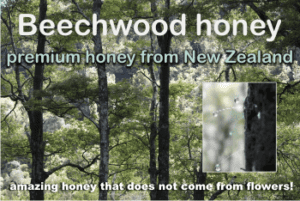 Beech honeydew honey has been found to have an exceptionally high level of iron-binding antioxidant activity. In a study published on researchcommons.waikato.ac.nz dr. SYALIZA BINTI OMAR proved that the temperature has to be maintained less than 40°C to avoid any degradation of the antioxidants.
Beech honeydew honey has been found to have an exceptionally high level of iron-binding antioxidant activity. In a study published on researchcommons.waikato.ac.nz dr. SYALIZA BINTI OMAR proved that the temperature has to be maintained less than 40°C to avoid any degradation of the antioxidants.
In the study “IN VITRO ANTIOXIDANT ACTIVITY OF HONEYDEW AND MULTIFLORALTYPES OF HONEY FROM SERBIA, by Zoran Maksimović and Nebojša Nedić, published in 2013, the oak honeydew honey from Bujanovak, southern Serbia, proved to have the highest antioxidant value (measured with FRAP essay) though its color intensity was lower than that of a mixture of oak and plum honeydew honey.
The results show that while in floral honeys, the color can be a good indicator of the antioxidant power (the darker the honey the higher the antioxidant activity), but the rule doesn’t apply to honeydews honey. You can read the entire study on Academia.edu.
In other study, Honeydew and chestnut honeys produced in a European Atlantic area had the highest mineral, protein, and flavonoid contents, as well as the highest antioxidant activities [Escuredo et al., 2013].
Yet, honeydew honey, as blossom honeys, depends A LOT on the geographical area and weather conditions. A study made by MĂRGHITAŞ et al, compared samples of honeydew from Romania, Bulgaria, Croatia, Greece and Turkey. The results showed that considering
– antiradical scavenging activity and antioxidant power, Romanian honey had the lowest value and Croatian honey had the highest value (assessed with DPPH and FRAP assays)
– Croatian honeydew honey presented the highest radical scavenging activity (1.39 mmol Trolox/100g honey);
– Bulgarian honey presented the highest value of total antioxidant power (11.45 mmols Fe2+/100 g honey)
– Turkish honey had the lowest activity of Trolox equivalent antioxidant capacity (1.87 mmol Trolox/100 g)
– Croatian honey had the highest activity (5.21 mmol Trolox/100 g)².
Improves memory:
Honeydew honey improved spatial memory of rats, as showed in a recent study.
Where can we buy honeydew honey from?
Your locals come first, of course, but if you don’t have them, try the online stores. Here are some examples:







Of course you can find it in other shops with a natural, bio specific. But as usual, I recommend you to first check with your locals, maybe they have it. I say “maybe” because it’s not a common honey, it’s not that easy to make honey in the forest.
Beekeepers don’t love to make honeydew honey.
Why? Because the collecting bees must be fed protein supplements, because honeydews lacks the protein found in pollen. And then, before winter, the beekeepers have to remove all the honeydew honey, because it has many indigestibles than light floral have, and honeybees can get dysentery and the whole colony can die.
================
================
Picture credits:
– “Ant Receives Honeydew from Aphid” by Dawidi, Johannesburg, South Africa – http://en.wikipedia.org/wiki/Image:Ant_Receives_Honeydew_from_Aphid.jpg. Licensed under CC BY 2.5 via Wikimedia Commons;
– “Melkende Ameise Honigtau” by böhringer friedrich – Own work. Licensed under CC BY-SA 2.5 via Wikimedia Commons
– Forest picture credit Nicholas A. Tonelli published under CC via flickr.com
References:
Main European unifloral honeys: descriptive sheets, by Livia PERSANO ODDO et al., Apidologie 35 (2004) S38–S81 © INRA/DIB-AGIB/ EDP Sciences, 2004, apidologie.org
CLASSIFICATION OF HONEYDEW AND BLOSSOM HONEYS BY DISCRIMINANT ANALYSIS, by S Bogdanov et al., ALP science 2006, Nr. 500
¹ BERETTA, G; GELMINI, F; LODI, V; PIAZZALUNGA, A; FACINO, R M (2010) Profile of nitric oxide (NO) metabolites (nitrate, nitrite and N-nitroso groups) in honeys of different botanical origins: Nitrate accumulation as index of origin, quality and of therapeutic opportunities. Journal of Pharmaceutical and Biomedical Analysis 53 (3): 343-349.
² POLYPHENOLIC CONTENT AND ANTIOXIDANT CAPACITY OF HONEYDEW HONEY: COMPARISON BETWEEN ROMANIAN AND OTHER SOUTH EUROPEAN DECLARED HONEYDEW HONEYS, by MĂRGHITAŞ, LIVIU ALEXANDRU; DEZMIREAN, DANIEL; STANCIU, OLTICA GIORGIANA; BOBIŞ, OTILIA, Economics, Management & Financial Markets;Mar2011, Vol. 6 Issue 1, p1213
³ Preliminary Studies Regarding Antioxidant and Antimicrobial Capacity for Different Types of Romanian Honeys, by Otilia BOBIS et al., Bulletin UASVM Animal Science and Biotechnologies, 68(1-2)/2011
THE IMPORTANCE OF HONEY IN THE PRESENT ALIMENTATION, by Reante Frank, Germany, Apiacta 4, 1994

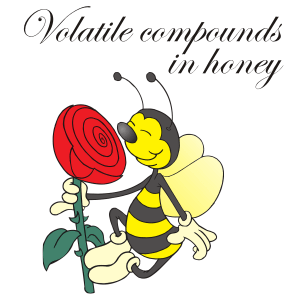
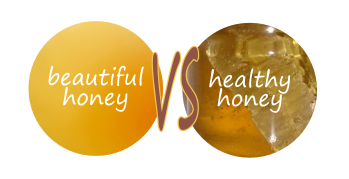
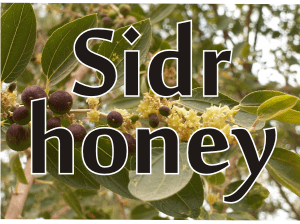
honeydew honey from Bulgaria
Well, so informative! I never really knew how honeydew is made until I read this article. So honeydew is basically insect poo 🙂
Yeap. Insect poo first and then bee vomiting. But do we need to know these things? It might spoil the moment of tasting it…
Wow. Very informative. I am glad that you posted references for your information too.
Oh, absolutely. We must be honest about the source of the info, and besides, people might want to get into further details.
Those scientists deserve all the credit for their work.
Sometimes I do think of that: We must put the source and credit of a picture, but we are not asked to put the reference and author of certain info. It’s quite unfair.
Laura
This is a very informative site! I never knew there was so many uses for honey. Matter of fact I always thought it was only one type of honey. I live in the Caribbean and I heard that honey is very good for the eyes but it seems like that is the only part of body that you do not mention. If anyone could enlighten me on that I’m sure it would be you.
Hi Marlon,
Yes, you are right about its benefits on eyes. In the past newborns were put some drops of honey in the eyes, so they don’t develop a type of microbe they could have taken during birth.
Today there are even homeopathic remedies for the eyes.
I will write an article about this soon, and I let you know.
Thanks for dropping by.
Laura
Very educational Website. Never knew about this kind of honey. Very nice Health benefits as well. Great Job!
Thank you Michael,
Honeydew honey is an unknown type of honey for Americans.
Laura
Hi! Wow what a wealth of information here! This is very interesting! I knew Honey was good but didn’t realize it was this good! I use it now not just in my hot tea but also in cooking and have found that it adds great flavor to many foods. You did a great job with your site, it’s laid out in an easy-to-follow manner, looks great! Nice use of imagery and again tons of great info! Thank you!
Hi Angela,
I’m sure it brings flavor to your cooking, but it doesn’t bring enzymes and other healthy constituents of honey. These are all lost during heating.
So, if you intend to eat honey for heath reasons, not only flavor, please eat it unheated. On fruits, ice-creams, sprinkled on pies if you want, on pancakes, on toast…. there are so many ways of enjoying it.
Thanks for liking my site. I like it, too. 🙂
Laura
I am very impressed at the amount of information provided on the process of making honey. A recent trip to central Asia got me into eating honey, on fruits , cheeses and of course in teas.
It will be difficult to find local honey that can compare to what I was able to bring back from my trip.
Shawn
You’re right about that! First it was raw honey, which is amazing. Then it was from a completely different geographic area, which means different flowers with different nectar. This kind of honey is an amazing experience for our taste buds.
I envy you! 🙂
Laura